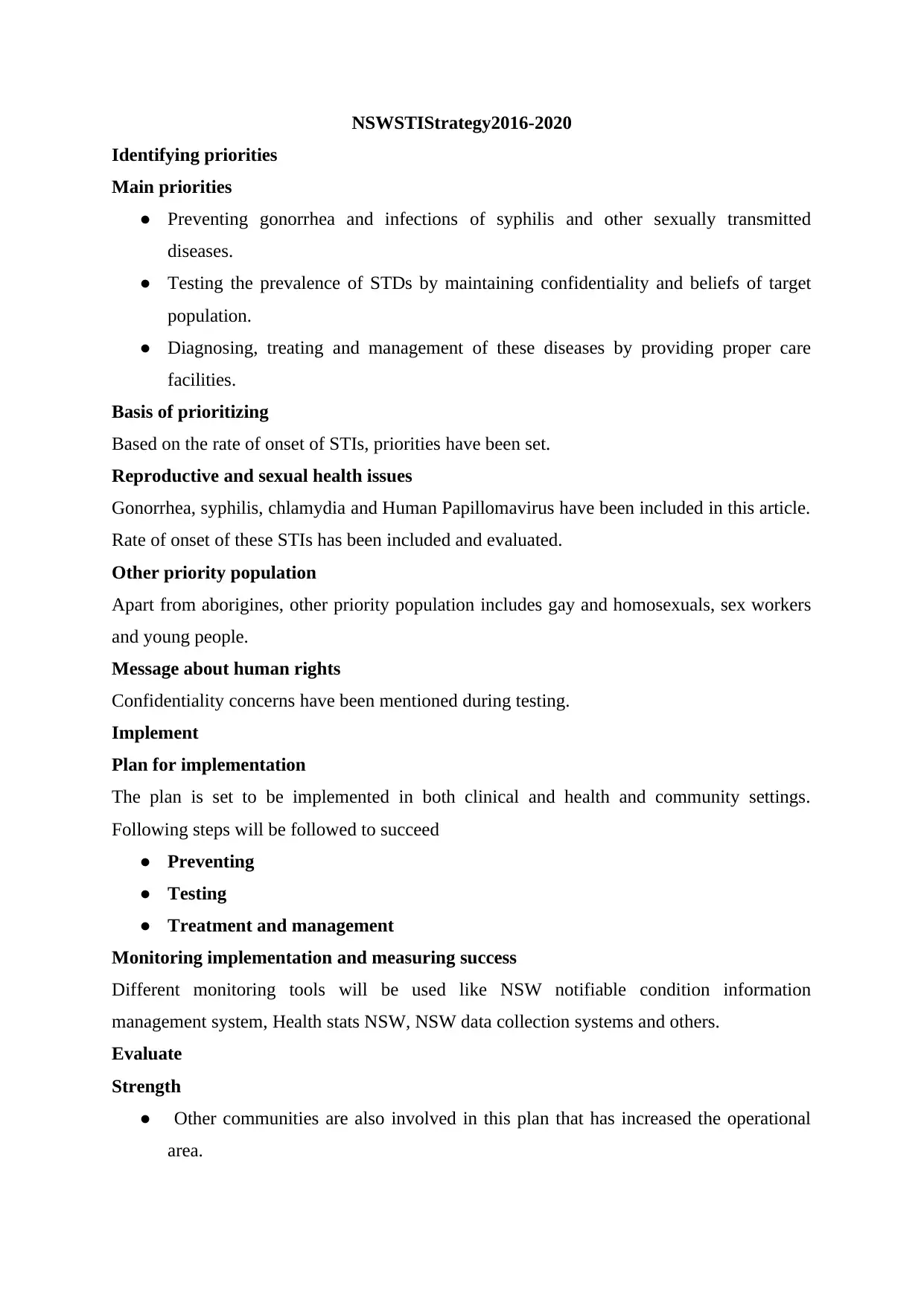Analysis of the NSW STI Strategy 2016-2020 for Public Health
VerifiedAdded on 2022/10/19
|3
|255
|27
Report
AI Summary
This report summarizes the NSW STI Strategy 2016-2020, which outlines priorities for preventing, testing, treating, and managing STIs in New South Wales. The strategy focuses on gonorrhea, syphilis, chlamydia, and HPV, with a particular emphasis on priority populations including Aboriginal people, gay and homosexually active men, young people, and sex workers. The report identifies key priorities, such as preventing STIs and ensuring confidentiality during testing. The implementation plan involves clinical and community settings, with steps for prevention, testing, treatment, and monitoring. The evaluation of the strategy includes the use of various monitoring tools. The report also evaluates the strengths of the plan, such as the involvement of multiple communities and partnerships, while also pointing out gaps like unclear roles for partners and limitations such as limited evidence for chlamydia control policies.
1 out of 3










![[object Object]](/_next/static/media/star-bottom.7253800d.svg)